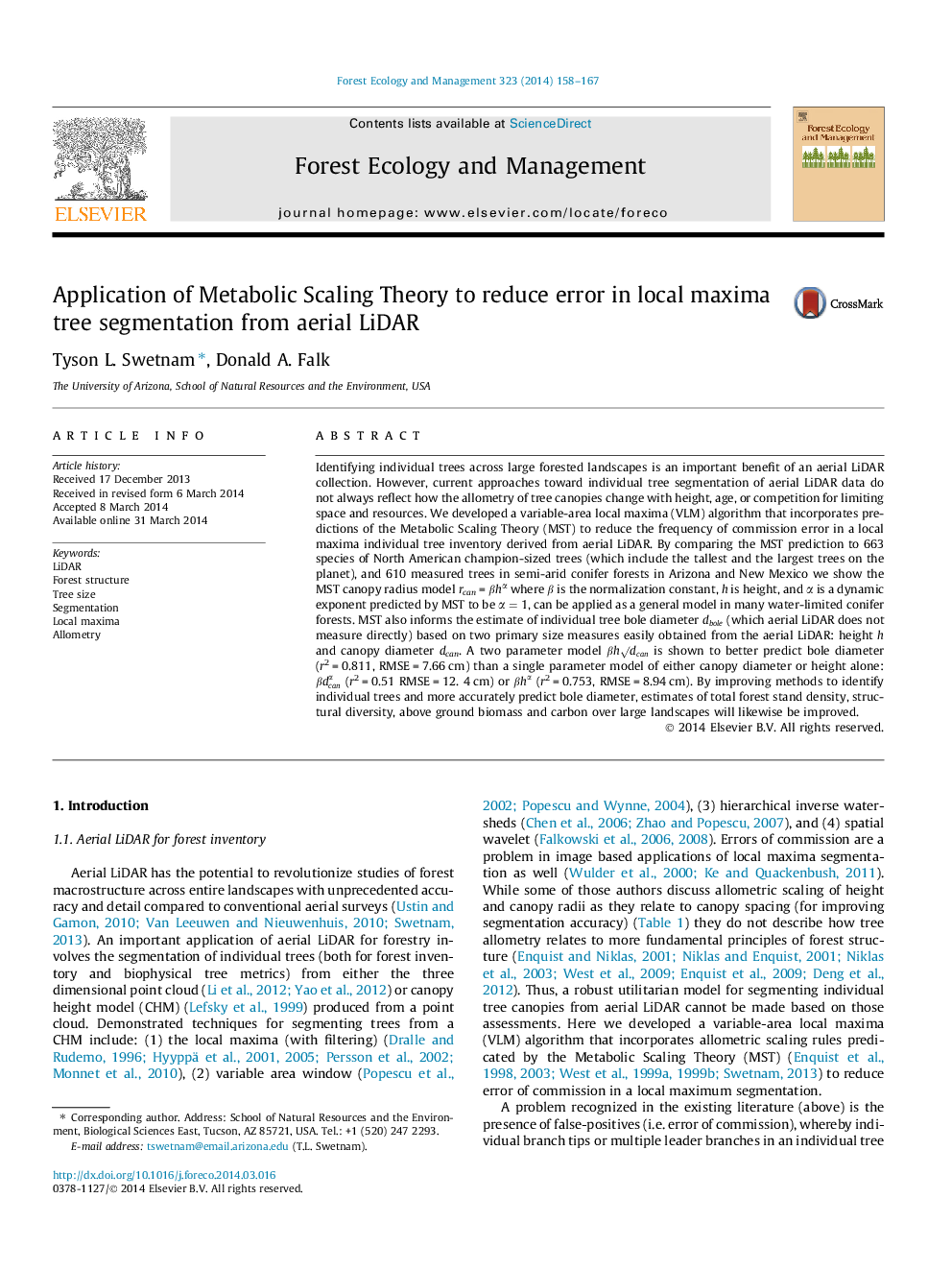| کد مقاله | کد نشریه | سال انتشار | مقاله انگلیسی | نسخه تمام متن |
|---|---|---|---|---|
| 86695 | 159206 | 2014 | 10 صفحه PDF | دانلود رایگان |

• Metabolic Scaling Theory (MST) utilitarian model for tree canopy and height allometry.
• A variable area local maximum LiDAR algorithm for conifer tree canopy segmentation.
• MST-based rules increase segmentation accuracy, reducing some commission errors.
• LiDAR based segmentation facilitates accurate landscape-scale tree inventories.
Identifying individual trees across large forested landscapes is an important benefit of an aerial LiDAR collection. However, current approaches toward individual tree segmentation of aerial LiDAR data do not always reflect how the allometry of tree canopies change with height, age, or competition for limiting space and resources. We developed a variable-area local maxima (VLM) algorithm that incorporates predictions of the Metabolic Scaling Theory (MST) to reduce the frequency of commission error in a local maxima individual tree inventory derived from aerial LiDAR. By comparing the MST prediction to 663 species of North American champion-sized trees (which include the tallest and the largest trees on the planet), and 610 measured trees in semi-arid conifer forests in Arizona and New Mexico we show the MST canopy radius model rcan = βhα where ββ is the normalization constant, hh is height, and αα is a dynamic exponent predicted by MST to be α=1α=1, can be applied as a general model in many water-limited conifer forests. MST also informs the estimate of individual tree bole diameter dboledbole (which aerial LiDAR does not measure directly) based on two primary size measures easily obtained from the aerial LiDAR: height hh and canopy diameter dcan. A two parameter model βh √dcan√dcan is shown to better predict bole diameter (r2 = 0.811, RMSE = 7.66 cm) than a single parameter model of either canopy diameter or height alone: βdcanα (r2 = 0.51 RMSE = 12. 4 cm) or βhαβhα (r2 = 0.753, RMSE = 8.94 cm). By improving methods to identify individual trees and more accurately predict bole diameter, estimates of total forest stand density, structural diversity, above ground biomass and carbon over large landscapes will likewise be improved.
Journal: Forest Ecology and Management - Volume 323, 1 July 2014, Pages 158–167